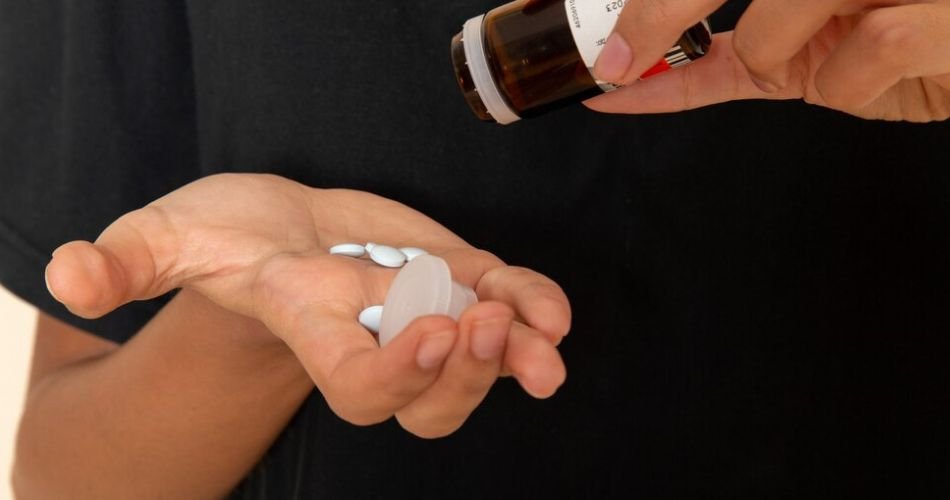Welloft dosage plays a crucial role in determining how effectively the medication treats conditions like depression, anxiety, and OCD. Understanding the correct dosage helps ensure safety, minimizes side effects, and maximizes therapeutic benefits. Whether you’re just starting treatment or adjusting your dose, knowing what to expect can ease concerns and promote better outcomes. This guide will walk you through how Welloft works, common dosage ranges, factors influencing dose decisions, and what to watch out for. Everyone responds differently, so personalizing the approach is essential. With the right information and medical guidance, Welloft can be a transformative part of your mental health journey.
How Welloft Works in the Brain
Welloft functions by inhibiting the reuptake of serotonin in the brain. This means it blocks the reabsorption of serotonin into neurons, making more of this neurotransmitter available to enhance communication between nerve cells. The increased serotonin availability leads to improved mood, reduced anxiety, and a better ability to handle stress. The changes are gradual, and that’s often why users may not notice an immediate difference after taking their first few doses. The true benefits of welloft dosage are typically experienced after about 2 to 6 weeks of continuous use.
Starting Dosage: What to Expect in the Beginning
Most patients prescribed Welloft begin with a starting dose of 50 mg per day. This dose is considered effective for many individuals with depression and anxiety. For some more sensitive individuals or younger patients, doctors might start at 25 mg per day to reduce the chance of side effects and slowly build up to the therapeutic dose. It is crucial not to adjust the dosage without consulting your doctor, even if you feel like the medicine isn’t working fast enough. Your body needs time to adapt, and the full effects often take a few weeks.
Adjusting the Dosage Over Time
If the initial 50 mg dose doesn’t bring sufficient relief after a few weeks, your doctor might decide to increase the dose gradually. Adjustments are typically made in 25 mg or 50 mg increments, depending on how well you tolerate the medication and how severe your symptoms are. The maximum recommended daily dosage for Welloft is 200 mg. However, reaching that dose is usually a step-by-step process guided by close monitoring. Your mental health provider will also keep an eye on side effects to ensure you’re responding well to the medication without complications.
How Dosage Varies for Different Conditions
Welloft dosage isn’t one-size-fits-all—it changes depending on the condition being treated. For depression and general anxiety, doses between 50 mg and 100 mg are common. OCD often requires a higher dose, ranging from 100 mg to 200 mg daily. Patients with PTSD might find relief at 75 mg, though some require more. These adjustments depend on your unique brain chemistry and how you respond to the medication. It’s all about balance—too low, and you might not feel better; too high, and side effects might outweigh benefits.
Influential Factors That Affect Welloft Dosage
Several factors influence how much Welloft you should take. Your age, weight, liver function, and general health all play a role. Children and adolescents may require smaller doses due to their developing nervous systems. Older adults often start on lower doses to avoid dizziness or drowsiness. Additionally, people with liver or kidney issues metabolize medications differently, which might necessitate adjustments. Your doctor also considers other medications you’re taking to avoid harmful interactions. Open communication about your health history is key to finding the safest and most effective dose.
The Importance of Taking Welloft Correctly
Welloft should be taken once a day, either in the morning or evening, and consistency is crucial. It can be taken with or without food, but if you notice stomach upset, having it with a meal can help. Taking it at the same time each day helps keep a steady level of the drug in your bloodstream, which improves effectiveness and minimizes side effects. If you accidentally miss a dose, take it as soon as you remember—unless it’s almost time for your next dose. In that case, skip the missed one to avoid doubling up, which can be dangerous.
Common and Serious Side Effects to Watch For
Most people tolerate Welloft well, especially after the first few weeks. Common side effects include nausea, headaches, dry mouth, fatigue, and changes in sleep patterns. These often subside as your body adjusts. However, some may experience increased anxiety or agitation at the beginning, which should be closely monitored. More serious reactions, such as suicidal thoughts, hallucinations, or severe mood swings, are rare but require immediate medical attention. If you notice any new or worsening symptoms, especially in the early stages, reach out to your healthcare provider right away.
Dealing with Overdose and Emergency Situations
Taking more than the prescribed amount of Welloft can lead to serious health risks, including serotonin syndrome, which is potentially life-threatening. Symptoms include agitation, hallucinations, rapid heart rate, fever, nausea, and muscle stiffness. If you or someone you know may have overdosed on Welloft, seek emergency medical attention immediately. Avoid trying to “make up” for missed doses by taking extra the next day—Welloft needs to be taken steadily, not in large, irregular amounts.
Welloft in Special Populations
Special populations such as children, pregnant women, and older adults require extra care when it comes to Welloft dosage. While Welloft is approved for use in children with OCD, it’s not always recommended for depression in younger age groups due to a potential increase in suicidal ideation. Pregnant women should only take Welloft if the benefits outweigh the risks, as there is a small chance of complications for the baby. Older adults are typically started on the lowest possible dose to reduce the risk of falls, dizziness, or confusion.
Monitoring Your Response to Welloft
Close monitoring is crucial in the early weeks and during any dosage change. Keeping a medication journal to track your mood, energy levels, side effects, and sleep patterns can help your doctor understand how the drug is working for you. Regular follow-up appointments allow your provider to make informed adjustments. If things aren’t improving after a few months, your doctor might consider switching medications or combining Welloft with therapy for better results.
Alcohol, Food, and Drug Interactions
While on Welloft, it’s advisable to limit or avoid alcohol, as it can amplify the sedative effects of the drug and potentially increase the risk of liver damage. There are no specific food restrictions with welloft dosage, but a balanced diet can support overall mental health. Certain medications, such as MAO inhibitors, blood thinners, and anti-inflammatory drugs, can interact with Welloft, so make sure your doctor knows about everything you’re taking.
Long-Term Use and Dependence
Welloft is not considered addictive, but your body does become accustomed to its presence over time. That’s why stopping it abruptly can cause withdrawal symptoms like dizziness, irritability, and sensory disturbances, often called “brain zaps.” For those who have been on Welloft for a long period, tapering off slowly under medical supervision is essential. Some individuals stay on the medication for years and experience sustained benefits, especially when paired with healthy lifestyle changes.
When and How to Stop Taking Welloft
If you and your doctor decide it’s time to discontinue Welloft, never stop suddenly. A slow, gradual reduction in dosage is the safest way to avoid withdrawal symptoms. Your doctor might reduce your dosage over several weeks or even months, depending on how long you’ve been taking the medication. During this period, continue monitoring your symptoms and stay in close contact with your healthcare team.
Real-Life Experiences with Welloft Dosage
Many people report that their welloft dosage journey involved a lot of trial and error at first. It’s common to experience initial side effects that eventually fade. What stands out in most success stories is the importance of patience and working closely with a doctor. Users often say that the right dosage changed their lives, helping them manage symptoms and regain control. Others note that while Welloft isn’t a cure-all, it’s a valuable tool in combination with therapy, self-care, and supportive relationships.
Conclusion
Understanding Welloft dosage is essential to getting the most out of this powerful medication. The journey can be a bit bumpy at first, but with careful monitoring, consistent use, and open communication with your healthcare provider, many people find relief and stability. Whether you’re just starting Welloft or adjusting your dose, being informed puts you in the driver’s seat of your mental health journey. Your dose might not look like anyone else’s, and that’s perfectly okay—what matters is that it works for you.




